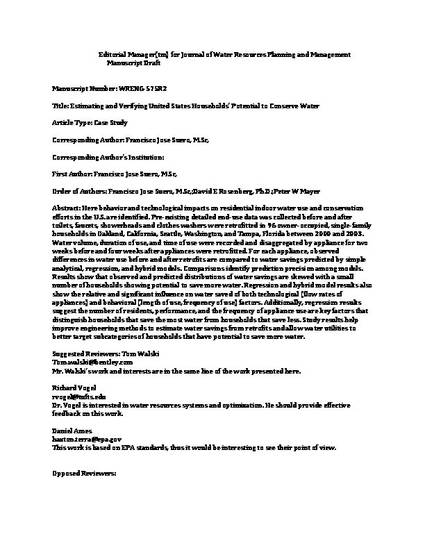
Behavior and technological impacts on residential indoor water use and conservation efforts in the United States are identified. Preexisting detailed end-use data was collected before and after toilets, faucets, showerheads, and clothes washers were retrofitted in 96 owner-occupied, single-family households in Oakland, California; Seattle, Washington; and Tampa, Florida, between 2000 and 2003. Water volume, duration of use, and time of use were recorded and disaggregated by appliance for two weeks before and four weeks after appliances were retrofitted. For each appliance, observed differences in water use before and after retrofits are compared to water savings predicted by simple analytical, regression, and hybrid models. Comparisons identify prediction precision among models. Results show that observed and predicted distributions of water savings are skewed with a small number of households showing potential to save more water. Regression and hybrid model results also show the relative and significant influence on water saved of both technological (flow rates of appliances) and behavioral (length of use, frequency of use) factors. Additionally, regression results suggest the number of residents, performance, and the frequency of appliance use are key factors that distinguish households that save the most water from households that save less. Study results help improve engineering methods to estimate water savings from retrofits and allow water utilities to better target subcategories of households that have potential to save more water.
